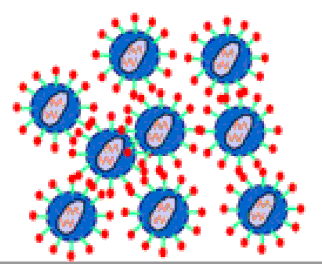Papers in the Biological Sciences

Qingsheng Li Publications
Document Type
Article
Date of this Version
8-2014
Citation
Journal of Leukocyte Biology, Volume 96, no. 6 (December 2014), pp. 1101-1107 ; doi:10.1189/jlb.3A0214-088RRR
Abstract
Type I IFNs play an important role in innate and adaptive immunity against viral infections. A novel type I IFN, namely IFN-ε, which can protect against vaginal transmission of HSV2 and Chlamydia muridarum bacterial infection, has been described in mice and humans. Nevertheless, the principle cell type and the expression pattern of IFN-ε in tissues remain uncertain. In addition, the expression of IFN-ε in Indian rhesus macaques (Macaca mulatta) has not been reported. Here, we analyzed IFN-ε expression in multiple mucosal sites of uninfected or SIV-infected Indian rhesus macaques using IHCS. We report for the first time the detection of IFN-ε expression in situ in the lung, foreskin, vaginal, cervical, and small and large intestinal mucosae of rhesus macaques. We found that the expression of IFN-ε was exclusive to the epithelial cells in all of the aforementioned mucosal tissues. Furthermore, the macaque IFN-ε sequence in this study revealed that macaque IFN-ε is highly conserved among human and other nonhuman primates. Lastly, SIV rectal infection did not significantly alter the expression of IFN-ε in rectal mucosae. Together, these findings indicate that IFN-ε may function as the first line of defense against the invasion of mucosal pathogens. Further studies should be conducted to examine IFN-ε protection against gastrointestinal as well as respiratory infections.
Includes supplementary material.
Included in
Allergy and Immunology Commons, Biological Phenomena, Cell Phenomena, and Immunity Commons, Female Urogenital Diseases and Pregnancy Complications Commons, Immune System Diseases Commons, Infectious Disease Commons, Medical Immunology Commons, Medical Pathology Commons, Reproductive and Urinary Physiology Commons, Veterinary Infectious Diseases Commons, Veterinary Microbiology and Immunobiology Commons, Virus Diseases Commons


Comments
Copyright 2014 Society for Leukocyte Biology. Used by permission.